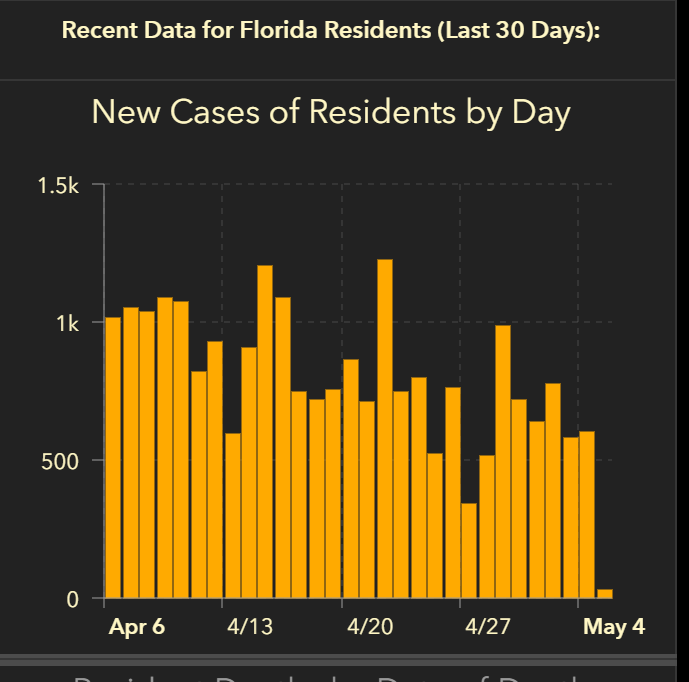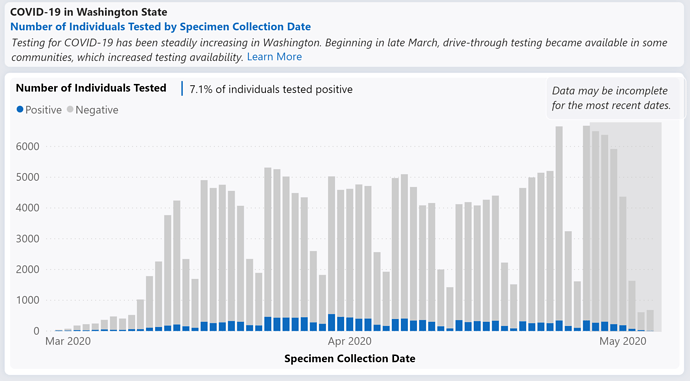So just to continue playing your wet blanket on this, and again I think it’s probably more likely than not there’s something to the mutation thing.
https://www.washingtonpost.com/health/researchers-hypothesize-that-a-highly-contagious-strain-of-the-coronavirus-is-spreading-but-other-experts-remain-skeptical/2020/05/05/db90d790-8ee7-11ea-9e23-6914ee410a5f_story.html
“If there were to be something that influenced transmissibility, then the spike protein is the place I expect to find it,” said William Hanage, a Harvard epidemiologist who specializes in the evolution of infectious diseases.
But Hanage, like many other outside researchers, was not convinced this mutation actually affects the virus’ ability to infect people. Though the mutated form has become the dominant strain, that could be a consequence of a “founder effect,” Hanage said.
When the mutated version arrived in northern Italy, an older and more susceptible population was unable to contain it. “It’s the fox that got into the henhouse,” Hanage said.
Hanage pointed to Washington state, where the virus was recognized relatively early and public health measures have proved effective at reducing cases. Both strains were circulating in the state by mid-March — and now, cases of both strains appear to be falling at the same rate. If the European strain really were more transmissible, he would expect it to crowd out all other versions.
One prominent scientist, Stanley Perlman, a virologist at the University of Iowa who played a role in naming the coronavirus, said Tuesday that the Los Alamos study looks credible.
“It certainly looks like it is more readily transmissible. Viruses mutate to become more transmissible, but not generally to become more virulent (unless this enhances transmissibility),” Perlman said in an email.
David O’Connor, a virologist at the University of Wisconsin, said the most interesting feature of the Los Alamos research is that the same pattern was seen in multiple locations. But he said “significant caution is warranted” because the data was not collected randomly. The vast majority of SARS-CoV-2 genomes in online databases come from Europe and North America, meaning strains from these regions are overrepresented in research.
One criticism of the Los Alamos hypothesis is that there could be other explanations for why one strain of a virus becomes dominant. University of Wisconsin virologist Thomas Friedrich, who has spent years studying the evolution and transmission of the Zika virus, said a virus that makes its way into a highly susceptible population — for example, Europe in January — will spread like wildfire, quickly becoming the dominant strain in the region.
That doesn’t necessarily mean it picked up a mutation that boosts its ability to infect people. It could mean the virus just got lucky — and humans got caught off-guard.
When the Zika virus migrated across the Pacific to the Americas and began to cause birth defects, scientists thought it may have picked up some kind of “microcephaly mutation” right when the outbreak in the Americas began, Friedrich said.
Experiments showed the virus strain did carry a mutation, and was able to cause nerve tissue damage when it was injected into mouse brains. But when scientists were able to study other variants, they found many of them also had the ability to harm fetuses. What made the virus strain in the Americas so dangerous wasn’t the mutation, but that people on this side of the Pacific had no immunity.

